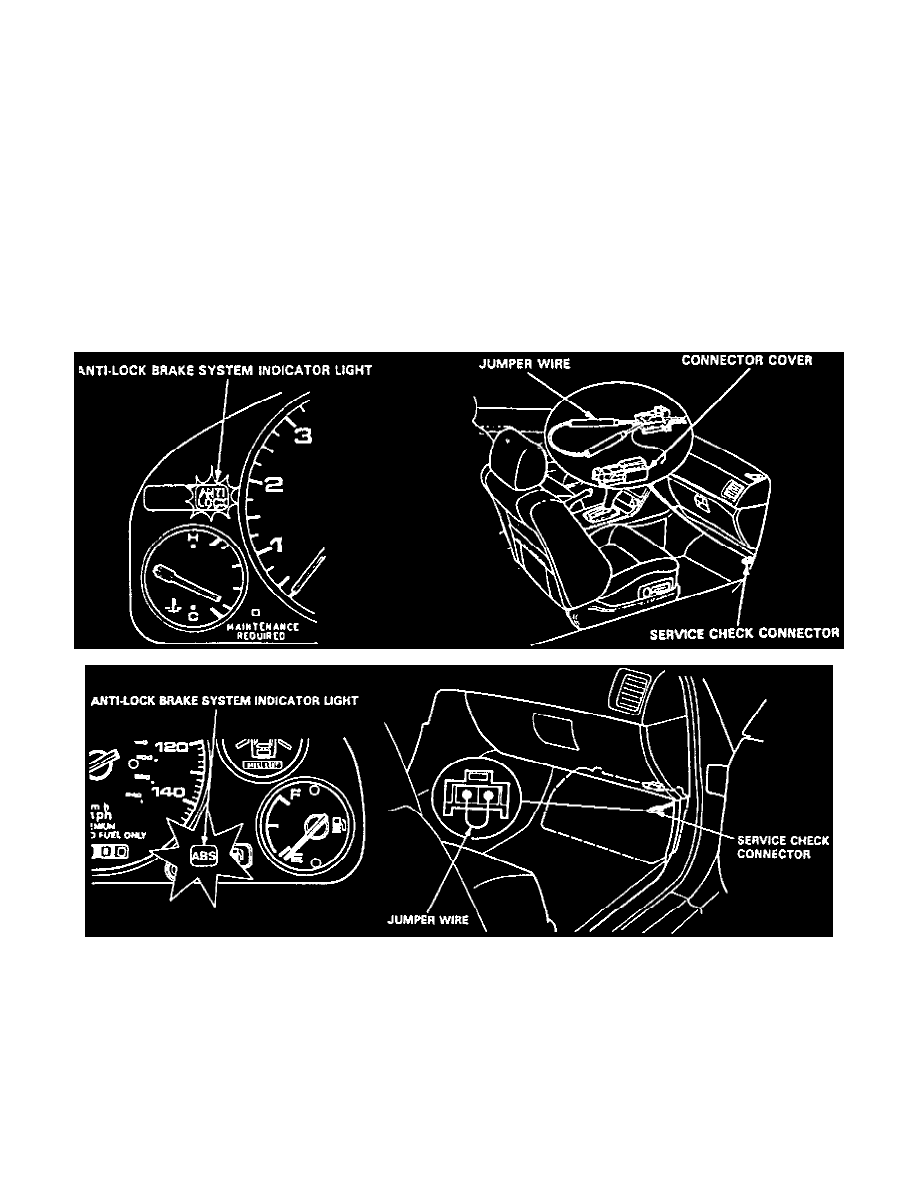Legend Sedan V6-3206cc 3.2L SOHC FI (1995)

ABS Light: Testing and Inspection
Warning Lamp Circuit
1. If anti-lock warning light does not go on when ignition is turned on, check the following items:
a. Blown anti-lock warning bulb.
b. Open circuit in yellow lead between No. 13 fuse and combination meter.
c. Open circuit in blue/red lead between combination meter and control unit.
d. Bad control unit to body ground.
e. If not loose or disconnected, install new control unit and recheck.
2. If anti-lock brake warning light remains on after engine is started and LED on control unit does not blink any code or sub code, check for the
following:
a. Loose or poor connection of wire harness at control unit.
b. Faulty ABS 2 fuse.
c. Open circuit in white lead between ABS 2 fuse and control unit.
d. Open circuit in yellow/black lead between fail-safe relay and fuse No. 3.
e. Open or short in yellow/green lead between fail-safe relay.
f.
Short circuit in blue/red lead between combination meter and control unit.
g. Open circuit in white/blue lead between alternator and control unit.
Fig. 8 Diagnostic Trouble Code Indicator
3. If warning lamp remains on while engine is running, proceed as follows:
a. Stop engine, then turn ignition switch on, ensuring anti-lock warning lamp comes on.
b. Restart engine and check warning lamp. If warning lamp goes off there is no malfunction.
c. If warning lamp remains on, stop engine and disconnect service connector located below glove compartment.
d. Using suitable jumper wire, connect two connectors, Fig. 7.
e. Turn ignition switch to On position but do not start engine.
f.
Record blinking frequency of anti-lock brake indicator lamp, Fig. 6.
g. Before starting engine, disconnect jumper wire from service connector, or Check Engine lamp will remain illuminated.
4. Control unit can indicate up to three trouble codes. If LED does not light, repeat steps 1 through 3.
